The best camping lanterns: light up your outdoor adventures
Our roundup of the best camping lanterns features the finest options for illuminating your tent or campsite
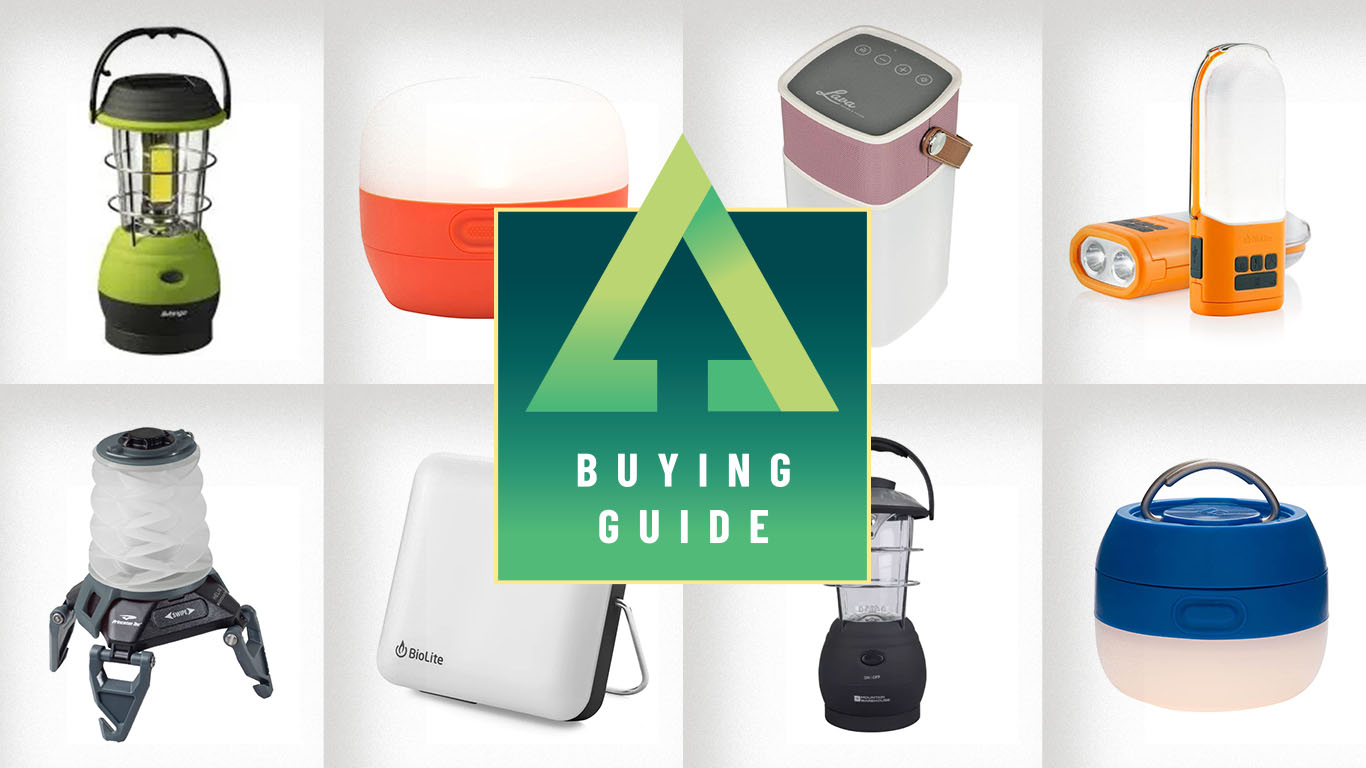
Let's shed some light on the best camping lanterns. These portable, rechargeable lights are extremely useful for various applications, from illuminating your outdoor kitchen and late night socialising to a spot of reading in the tent before forty winks kicks in.
What sets the best camping lantern options apart from flashlights and headlamps is the broad, soft and continuous light that they create. Flashlights generally give you a focussed beam and while many headlamps have a diffuse light setting, it's rarely as effective as a quality camping lantern.
If weight if your main priority, the best camping lantern is the neat little PrincetonTec Helix, which stands easily on uneven surfaces, has great burntime, and can be charged quickly via USB. If you're car camping, the Coleman 360 Light and Sound is a great choice, offering three versatile light settings and serving as a speaker for a little gentle music after dark.
We've put all the lanterns in this guide to the test on dark campsites, both inside and outside our tents, to see how well they work for helping you cook, read, and find your way at night. We checked how long each one lasts on a single charge compared to the manufacturer's specs, and checked each one's weight. When you're backpacking, every ounce counts.
The best camping lanterns
You can trust Advnture
Small camping lanterns
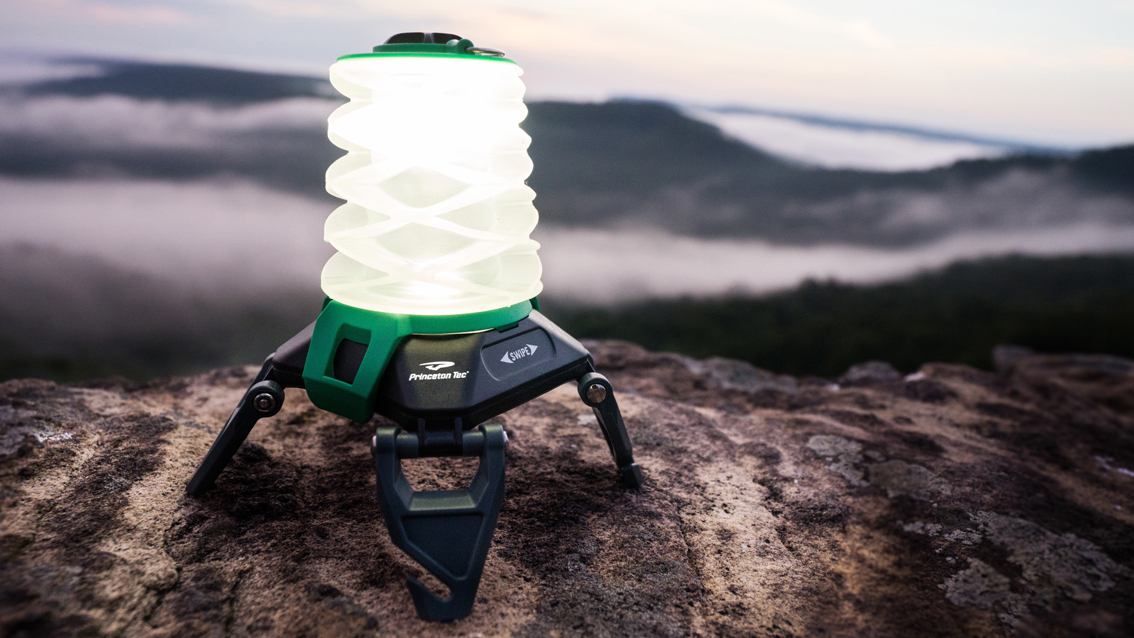
1. PrincetonTec Helix Backcountry Lantern
Our expert review:
Specifications
Reasons to buy
Reasons to avoid
Bound for the wild? Take along the perfect companion in the form of PrincetonTec’s Helix Backcountry lantern. There’s a lot to love about this little lantern – it may only weigh 155g and pack down to the size of a coffee cup, but it’s a very useful light source. Dim the light from a bright 150 lumens down to a more ambient 30 lumens, or switch to the red light mode when you want to locate something without blowing your night vision, or if you’re flying under the radar on wild camping trips.
We love the concertina-style lamp, which is easy to erect or fold down on the fly. The lantern has sturdy tripod-style legs for use on the floor, or can be turned upside down and hung from a branch or a tent loop – it’s is also water-resistant if you encounter stormy weather. This lamp is USB chargeable – if you’re going to be gone on an adventure for days at a time, consider PrincetonTec’s Helix Basecamp version of this lantern instead, which is charged with AA batteries (so you can take along some spares).

2. Biolite Sunlight
Our expert review:
Specifications
Reasons to buy
Reasons to avoid
Come rain or shine, Biolite’s Sunlight has got you covered – this sturdy square lamp can be charged with solar power using a large panel on the back, or if the skies are grey it can also plug in via USB. The clever 360 swivel arm lets you attach this block of light to tents, tables or trees, or tie it to the back of your backpack if you’re hiking and want to make the most of the sun’s rays. At just 100g and a pocket-friendly size, the Sunlight is supremely packable.
This is a bit of a party option too, with three coloured LED light versions in case you want something a bit different when you’re heading to a festival or tenting it with friends. 100 lumens is more than enough to illuminate the inside of a tent, and works brilliantly around the house, too. We were also surprised by how affordable the Sunlight is – this is the cheapest lantern in our round-up and offers great bang for your buck.
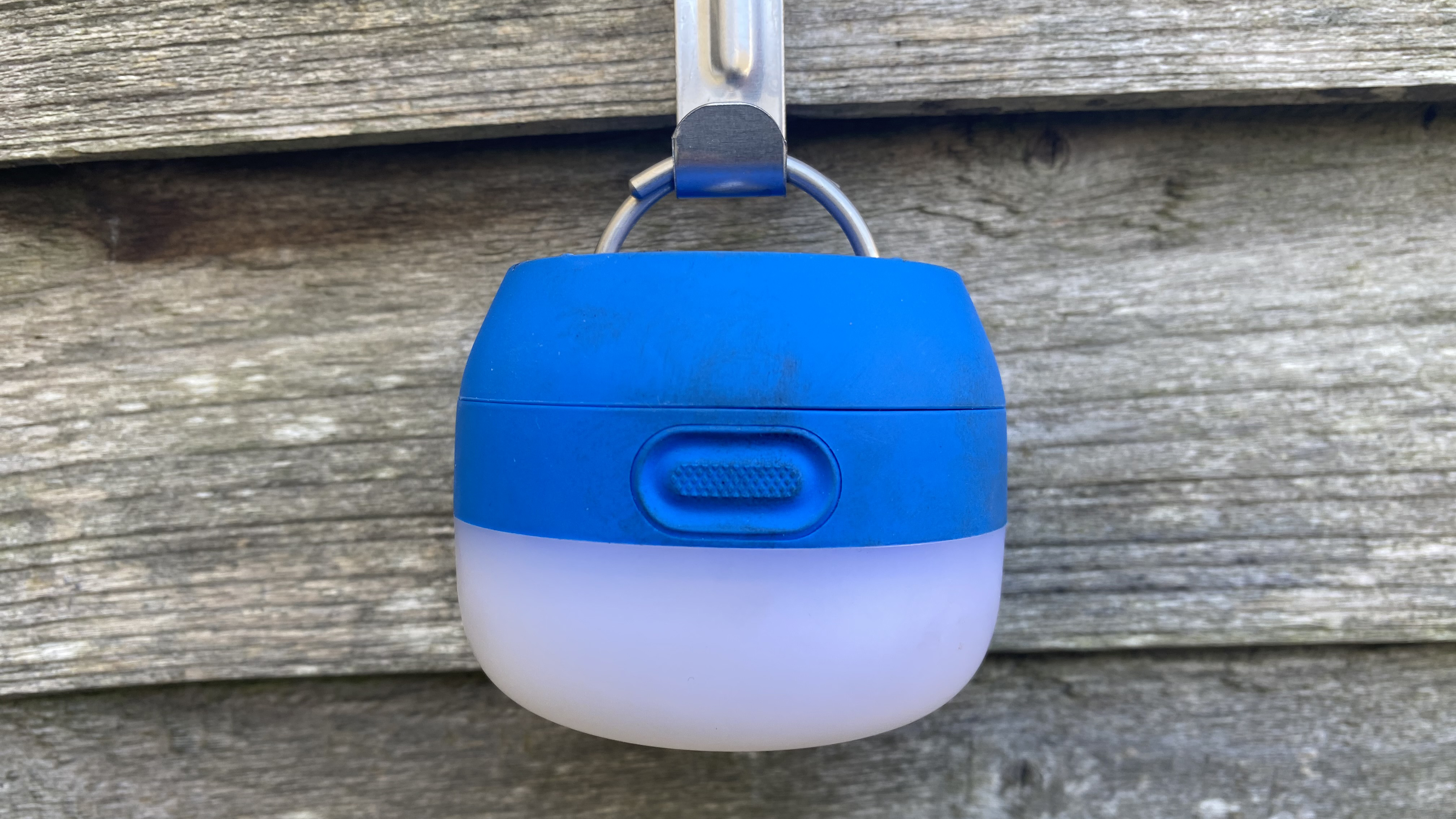
3. Black Diamond Moji Lantern
Our expert review:
Specifications
Reasons to buy
Reasons to avoid
We find ourselves reaching for the small but perfectly formed Moji lantern again and again – this dinky little light is perfect for wild campers, backpackers and anyone else who travels fast and light. We like taking our Moji lantern wild camping, as it’s so small and light (150g and about the size on an orange) that it fits in any backpack (or indeed, in any pocket). Once you’ve set up your tent, the lantern’s unfolding hooks will easily hang off a ceiling loop and offer a welcoming warm glow that, at 100 lumens, is still bright enough to read by or to help you see when you’re getting your sleeping bag or your supper sorted. Brightness is adjustable, and the Moji will shine bright for days on the juice of three AAA batteries. Simple but brilliant.
Multi-purpose camping lanterns
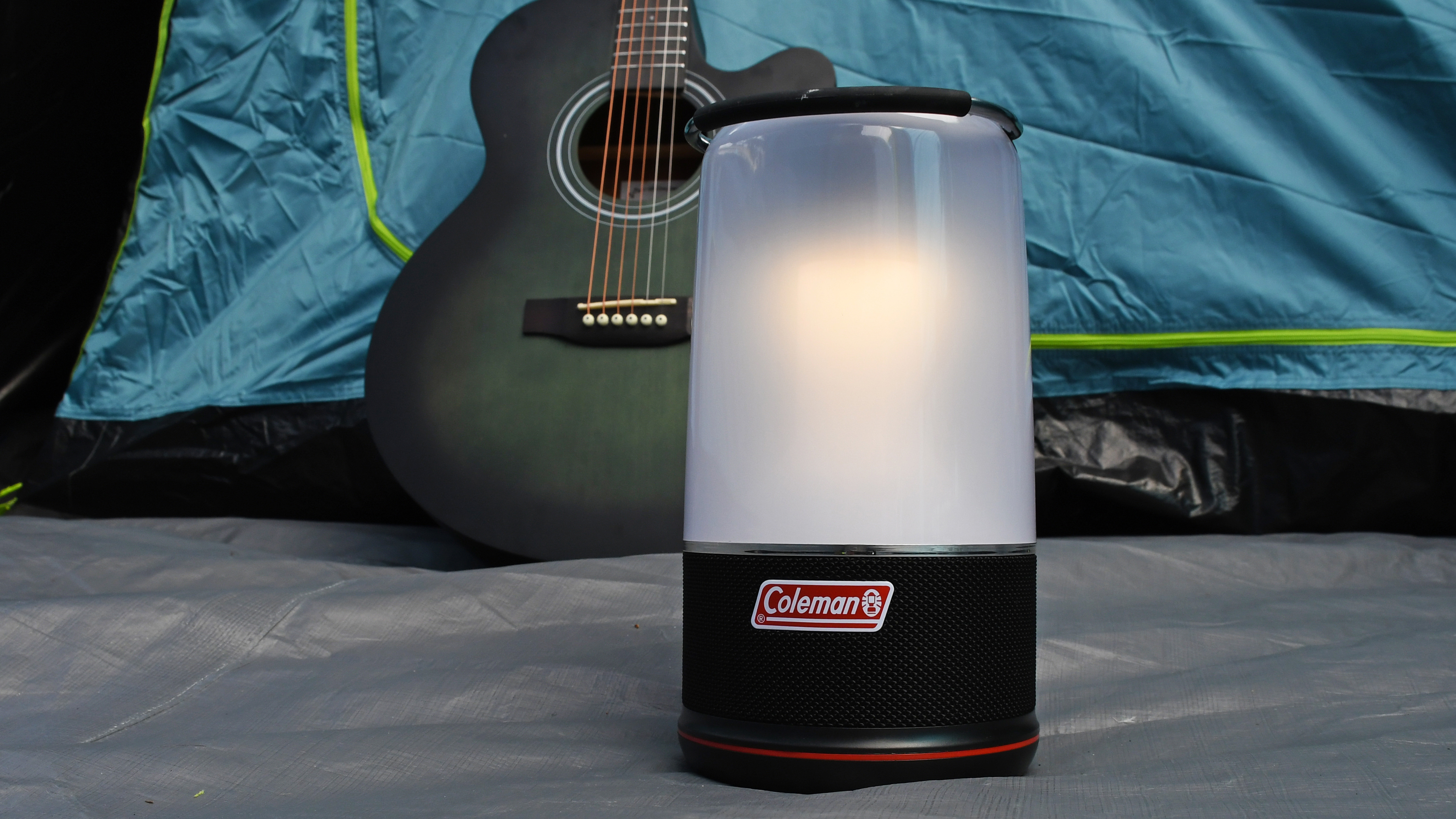
4. Coleman 360 Light and Sound Lantern
Our expert review:
Specifications
Reasons to buy
Reasons to avoid
Extremely easy to set up and use, the 360 Coleman Light and Sound unit is an excellent camping lantern and a mobile disco all in one. The light has three brightness settings, from full beam when you’re desperately trying to locate things the midst of an inky moonless night (like the campsite toilet), to low when you just want to cast an ambient glow on the evening scene. The middle setting is ample for doing thing such as playing cards in the tent on those long evenings when the weather has decided to rain on your outdoor plans, and you get 16 hours of illumination on that setting (as compared to seven hours on high and 40 hours on low).
The lantern charges via a USB port, and it can be hung from a tree or the top of your tent via a little handle. Our gripe with the light is that it doesn’t have a red setting, for use when you’re star gazing and don’t want to blow your night vision. What it does have, though, is an good-quality circular speaker at the base. With this switched on you can connect your phone via Bluetooth and play music for up to 20 hours while you sit around the fire or huddle in the tent. Just don’t keep your site neighbours up all night, or they might ram the 360 lantern where light was not intended to shine…
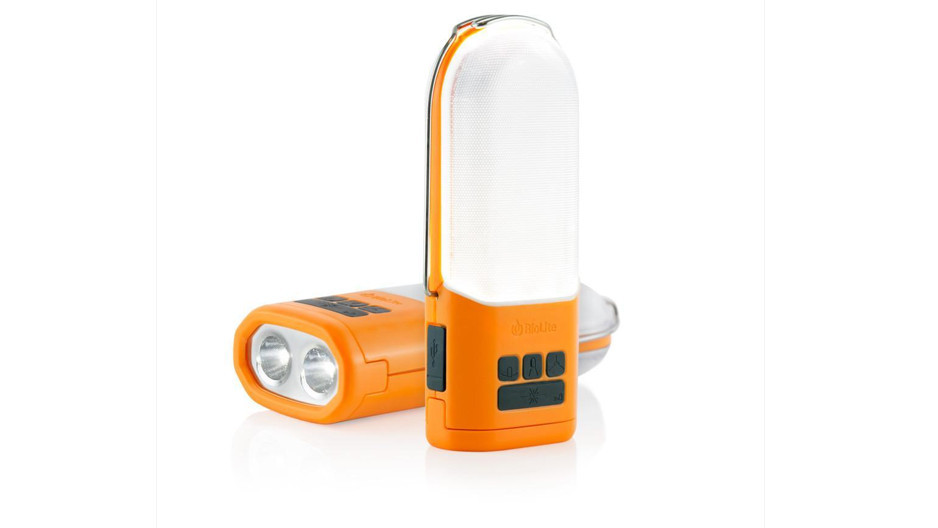
5. Biolite Powerlight
Our expert review:
Specifications
Reasons to buy
Reasons to avoid
Versatility is the name of the game with Biolite’s Powerlight. This clever, flat torch works as two different lights: as a lantern, emitting a warmer, softer light; or as a powerful hand-held flashlight, with a max lumens of 250 and a range of 100 metres. The Powerlight’s versatility (and its dinky pocket-friendly size) makes it perfect for outdoor adventures as well as camping trips, and therefore worth its price. The Powerlight is USB rechargeable, and will also recharge your devices when you’re on the go, charging up to three smartphones when fully juiced up. Once charged, the softer lantern will burn for up to 72 hours. It has a 360° S-hook, so you can hang it from loops in your tent or branches of a tree, or angle from any direction.
At just 210g and in a compact size, the Powelight works for lightweight backpacking trips as well as traditional camping, and is useful for working outdoors or sticking in workshops and garden sheds, too. If you want one lantern/flashlight combo to rule them all, this is a great quality choice.
Classic style camping lanterns

6. Vango Lunar 250
Our expert review:
Specifications
Reasons to buy
Reasons to avoid
If you’re after a simple and sturdy camping lantern for casual trips with family or friends, you can’t really go wrong with Vango’s Lunar 250 Eco. The eco in the name is due to the fact that this lantern can be recharged in sunlight, and if it’s a grey day it can also connect via USB to charge from the mains.
Once charged, the Lunar 250 goes up to a very bright 250 lumens, which will illuminate some of the landscape around your tent if needed. A handy hook on top of the lantern makes it ideal as a central light in a large family tent. The only downside is that, on test, the lantern’s runtime was only 3–5 hours, so you’ll need to recharge it regularly, making it less useful for multi-day holidays if you don’t have electricity available and the sun decides to hide.
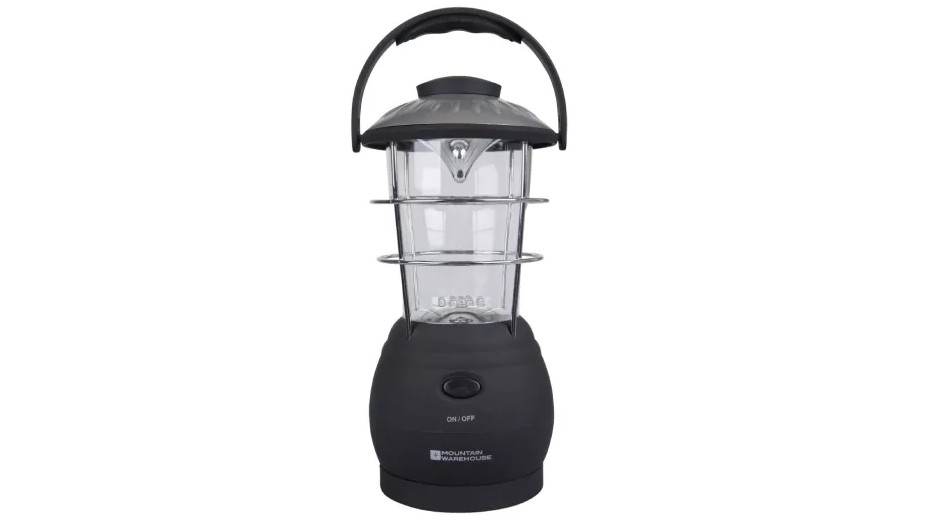
7. Mountain Warehouse Wind-Up Lantern
Our expert review:
Specifications
Reasons to buy
Reasons to avoid
Have you ever thought fleetingly about what you’d do in an apocalypse (or failing that, a power cut)? A wind-up lantern requires no batteries and runs on elbow grease instead, making it a brilliant choice for emergencies, but also great for camping trips and other adventures in the wild where you won’t be able to charge devices. Mountain Warehouse’s lantern has three settings and offers up to 45 lumens of light, which we found more than enough to illuminate any size of tent. Mountain Warehouse reckon it takes one minute of winding to get 20 minutes of light, although we found the lantern worked on a lower setting for three hours at a time after a few minutes of winding. Either way, it’s well worth picking a hand-cranked lantern for the lack of battery faff, and also as an excellent eco-friendly option. Children often like the challenge of creating energy that can be turned into light. It’s a pity the light the lantern gives off isn’t a tad warmer, but it’s still a great choice for car campers, and a good backup lantern for the home, too.
Lantern | RRP | Weight | Lumens | Max burntime |
Lava Brightsounds 2 | $55 (US) / £40 (UK) | 620g / 22oz | N/A | 32 hours |
Biolite Powerlight | $80 (US) /£65 (UK) | 210g / 7oz | 250 | 72 hours |
Black Diamond Moji Lantern | $20 (US) / £20 (UK) | 122g / 4.3oz | 100 | 10 hours |
Coleman 360 Light and Sound Lantern | $65 (US) / £70 (UK) | 620g / 22oz | 400 | 40 hours |
PrincetonTec Helix Backcountry Lantern | $96 (US) / £70 (UK) | 155g / 5.5oz | 150 | 24 hours |
Biolite Sunlight | $20 (US) / £18 (UK) | 100g / 3.5oz | 100 | 50 hours |
Mountain Warehouse Wind Up Lantern | $40 (US) / £30 (UK) | 600g / 21g | 45 | 1 minute of winding = 20 minutes of light |
Vango Lunar 250 | $33 (US) / £30 (UK) | 540g / 18oz | 250 | 3.5 hours |
How we test the best camping lanterns
At Advnture we endeavor to test every product we feature extensively in the field. That means one of our team of reviewers and writers – all experienced outdoor specialists active across the US, UK, Europe and Australasia – taking it out into the terrain and climatic conditions that it’s designed for. If, for any reason, this isn’t possible, we’ll say so in our buying guides and reviews.
Our reviewers test camping lanterns in a range of outdoor scenarios – car camping, backpacking, base camping – assessing their value and performance against the claims of the brand in terms of illumination, weight, battery consumption, robustness and features.
How to choose a camping lantern
There are many different kinds of lighting solutions out there, with lanterns, headlamps and flashlights all competing for your attention. While headlamps are great for when you're out on the trail and, along with flashlights, are great for producing a focussed beam, a lantern is probably your best bet for lighting up a larger space, such as a family tent or your cooking area.
Following are some of the factors you should consider when purchasing the best camping lantern for you.
Design and weight
From traditional storm lamps to minimalist orb and square-shaped lights, the best camping lanterns come in all shapes and sizes. What design you pick is up to you – the only factor we’d recommend thinking carefully about is weight and packability. It’s simple – if you’re a wild camper or bikepacker, you’ll need a light that’s as small and as lightweight as possible, to avoid it taking up too much of your pack. We’ve included lanterns in our round-up that weigh just 100g and fit in your pocket, so you’re covered there. Family campers, car campers and glampers will be lighting up a bigger space and will have more room for storage and transportation, so they can pick a larger, heavier lamp.

Lumens
You’ll see lanterns and flashlights with either LED or Xenon bulbs on the market, and we found both worked well on test. The key is the amount of lumens they emit – for a lantern you may want to use as a torch, we recommend going above 150 lumens for decent brightness. For lighting up a 4-person tent, the fireside or even allowing you a bit of reading light in your hammock, 100 lumens should be more than enough. Many of the best camping lanterns are dimmable, too, which is a handy feature for controlling ambient light.
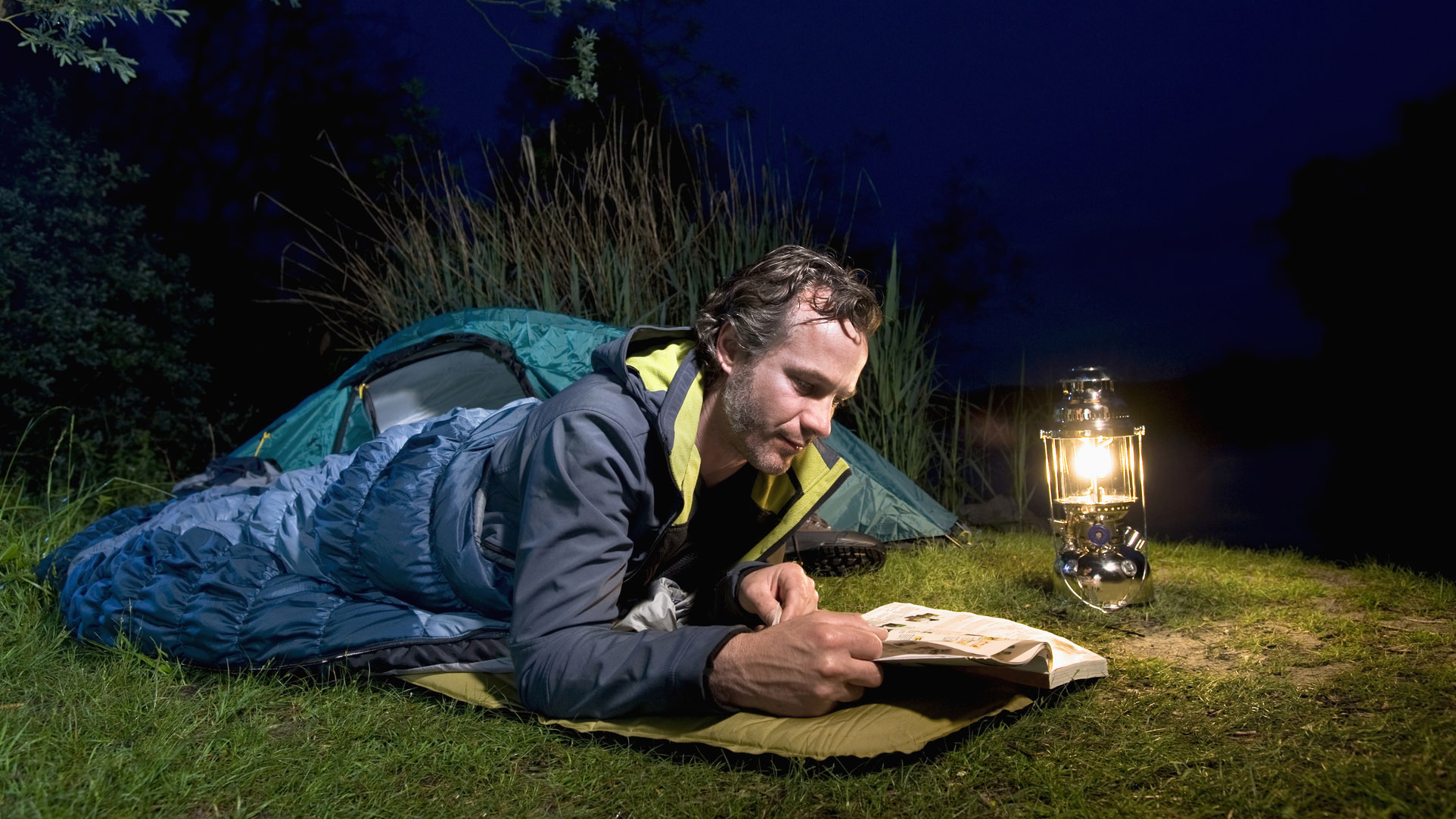
Burntime
The burntime is how long a lantern will stay lit before its fuel runs out, which in the cast of an electric lantern, is its battery. This is a crucial consideration if you plan to use your lantern for many hours on end. When camping in the off season, it gets dark much earlier than in the height of summer. It's likely you will be cooking and socializing with help from the light of your lantern. If you then retire to your sleeping bag and have a decent session with your latest book, it's likely you'll be stretching your best camping lantern's capabilities.
Charging
There are lots of different ways to charge camping lanterns – some take batteries, others can be recharged via USB, some are solar and some can even be hand cranked.
The best charging option for you depends on how far you like to head into the wild on your camping trips. If you’re camping for just a night or two or have somewhere to charge devices, a USB lantern is great (and is a more eco-friendly choice than using batteries). If you take a power pack along or a solar charger, you will be able to juice up your lantern multiple times, even in the backcountry.
Having said that, battery-powered lanterns are also good idea for wild campers and backcountry adventures, as long as you carry lots of spares (we prefer to use rechargeable batteries when possible). Solar lanterns are brilliant if the weather is looking good, and we like the ease of hand-cranked lanterns, which need nothing but human power to run - guaranteed to appeal to your inner prepper.
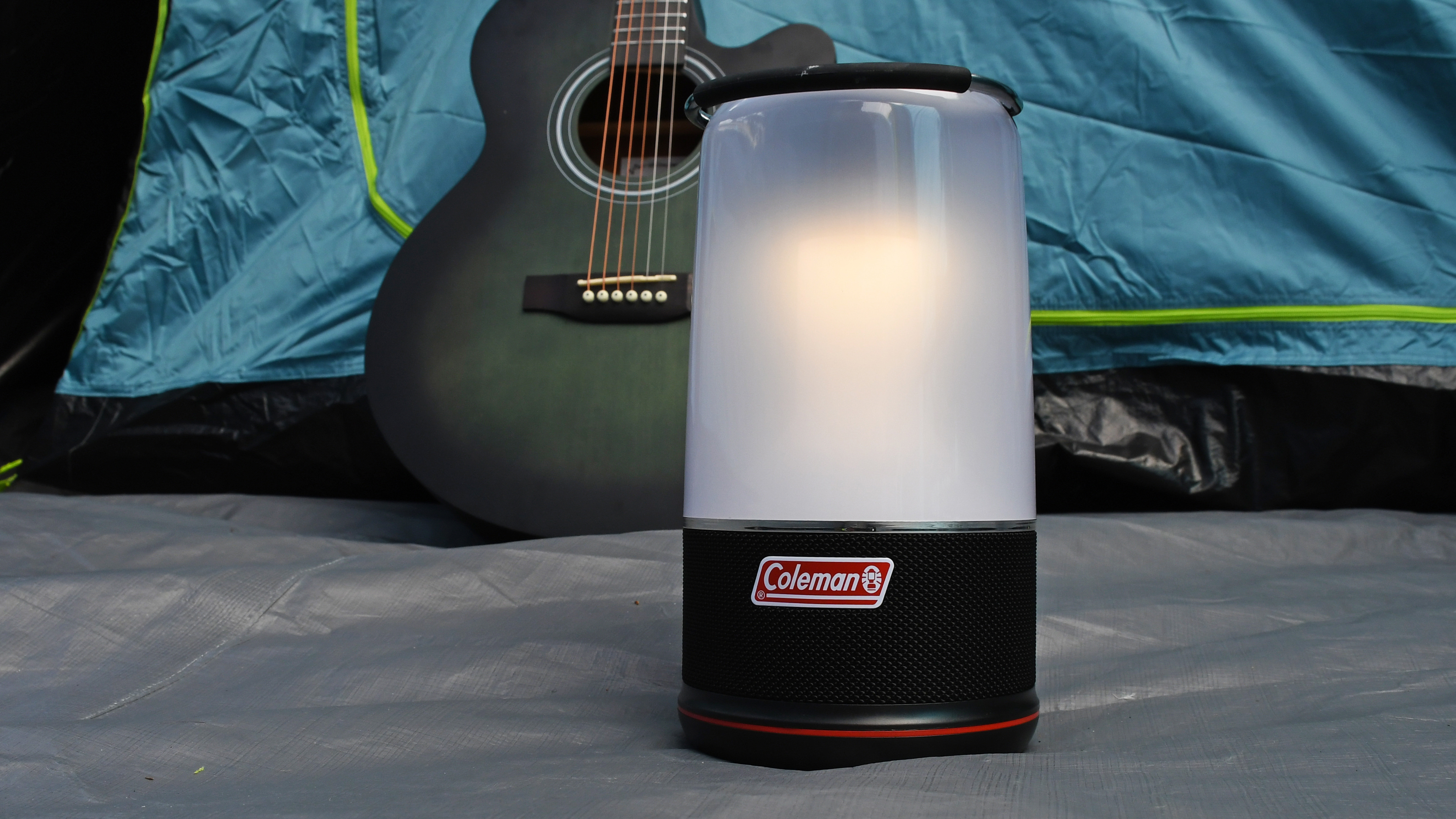
Electric vs gas powered
These days, electric powered lanterns are the norm and most contain batteries that charge just like your phone, using a USB. The advantages of electric lanterns are that they are quiet, lightweight and are less likely to set your tent on fire. You can carry a power bank to give your lantern more juice on multi-day trips. However, power may be at a premium when backpacking and you may want to prioritize other items like your mobile phone, watch or headlamp when it comes to recharging. Cold temperatures also reduce the performance of batteries.
Traditional gas-powered lanterns are better suited to freezing conditions, giving you a bright flame with a long burn time. Of course, they require ventilation to work and must be kept away from flammable materials.
What to do with your old camping lantern
If you have an old camping lantern that no longer works, make sure to dispose of it as waste electrical equipment, and properly dispose of any batteries (rechargeable or removeable). Most centers have facilities for recycling any kind of household batteries, and many large supermarkets also have collection bins for alkaline batteries.
If your lantern still works and you're just planning to upgrade, consider donating the old one to a charity or thrift store, or a local outdoor gear exchange. Make sure to check that they accept electrical items first, though.
Advnture Newsletter
All the latest inspiration, tips and guides to help you plan your next Advnture!
An award-winning travel and outdoors journalist, presenter and blogger, Sian regularly writes for The Independent, Evening Standard, BBC Countryfile, Coast, Outdoor Enthusiast and Sunday Times Travel. Life as a hiking, camping, wild-swimming adventure-writer has taken her around the world, exploring Bolivian jungles, kayaking in Greenland, diving with turtles in Australia, climbing mountains in Africa and, in Thailand, learning the hard way that peeing on a jellyfish sting doesn’t help. Her blog, thegirloutdoors.co.uk, champions accessible adventures.
- Pat KinsellaAdvnture Consulting Editor
- Alex Foxfield

